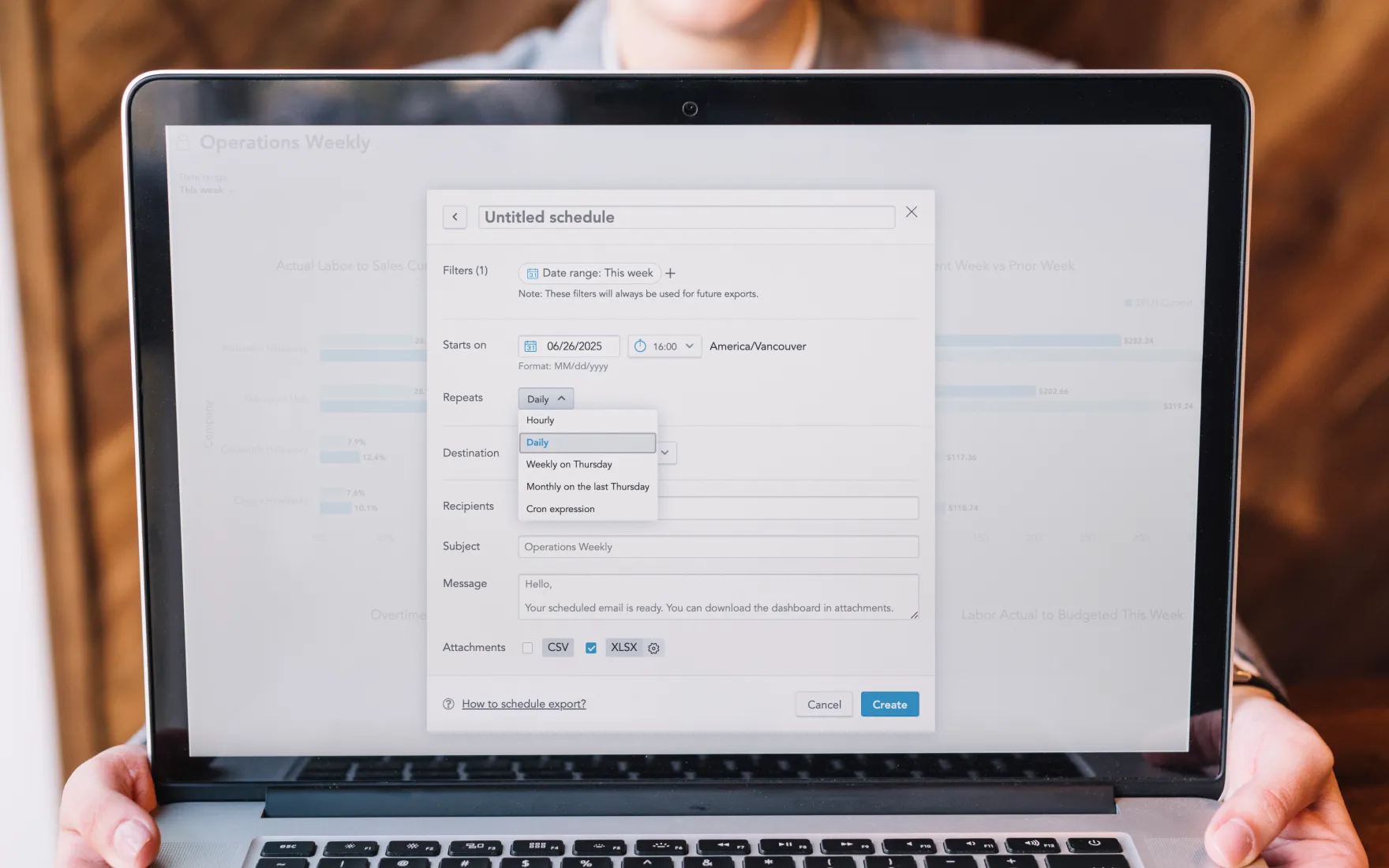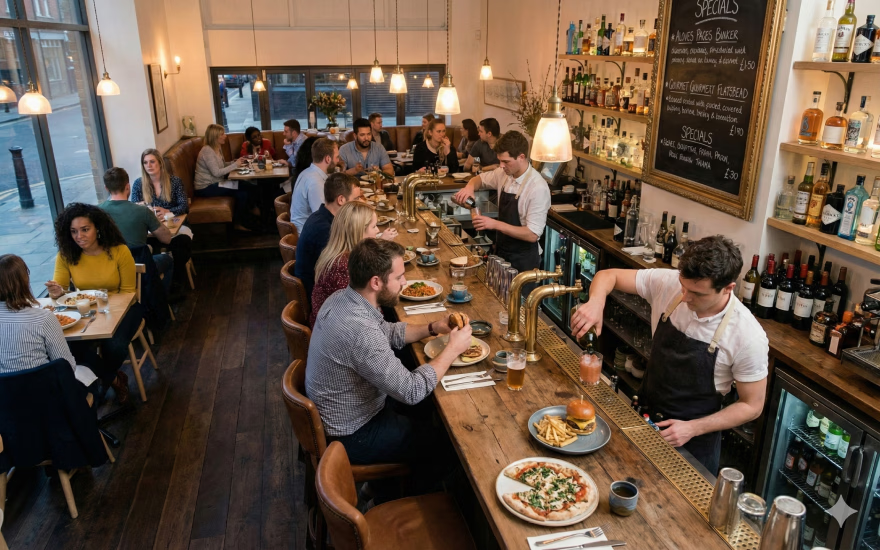What Should Be in a Restaurant Manager Onboarding Checklist?

In a fast-paced industry where the average restaurant sees a high turnover rate, onboarding restaurant managers effectively can make or break your operations. A well-structured restaurant manager onboarding checklist is not just a nice-to-have — it’s a critical tool for long-term employee success, strong leadership development, and operational consistency across all locations.
Why Does Onboarding Matter in the Restaurant Industry?
The restaurant industry is notorious for high staff turnover and fast promotions from within. But with leadership roles comes a heavier load of responsibility — including team management, food safety compliance, labor law adherence, and brand execution.
Research by Brandon Hall Group found that organizations with strong onboarding programs improve employee retention by 82% and productivity by over 70%. In multi-unit operations or busy establishments, onboarding isn’t just about compliance — it’s about creating repeatable, effective systems that help new managers feel confident, knowledgeable, and connected from the start.
Without a standardized onboarding process, restaurant operators may face:
- Inconsistent manager performance
- Poor guest experiences
- Compliance issues
- High early-stage turnover
- Culture misalignment
The solution lies in embracing restaurant-specific HR best practices — starting with a solid onboarding checklist.
What Is a Restaurant Manager Onboarding Checklist?
A restaurant manager onboarding checklist is a structured roadmap that outlines what new managers should learn, experience, and complete throughout their first days, weeks, and months on the job. It moves beyond simple orientation — where names are exchanged and handbooks are signed — and focuses on full integration into responsibilities, culture, and leadership.
An onboarding checklist ensures consistency in how new leaders are trained across locations. Whether you operate one restaurant or fifty, your managers should all receive the same foundational knowledge in:
- Labor law and compliance protocols
- Technology systems like scheduling and payroll platforms
- Team leadership and development best practices
- Restaurant brand values, menu, and service expectations
By implementing a comprehensive onboarding process, you reduce the learning curve and empower managers to lead with clarity and accountability. According to Harvard Business Review, effective onboarding reduces new hire failure rates by up to 50%.
Why Is Effective Onboarding Critical for Restaurant Managers?
The early days of a new hire’s experience are incredibly influential. For restaurant managers, the first 90 days shape how well they’ll adapt, lead, and represent the brand — either becoming top performers or early exits.
Here’s why onboarding is critical for restaurant managers:
- Managers set the tone: They model behavior for the entire team. If they’re unclear about operations or expectations, their confusion trickles down.
- Compliance responsibilities: Managers oversee everything from health code adherence to break enforcement — crucial elements that must be taught early.
- Culture-building: Managers must blend into and promote your restaurant’s core values. Without early cultural immersion, they may unintentionally drift from brand standards.
- Faster time-to-productivity: Well-onboarded managers become effective leaders faster, enabling their teams to hit performance targets sooner, reduce costly ramp-up periods, and drive measurable business results within weeks rather than months.
A poor or rushed onboarding process, on the other hand, can lead to:
- Miscommunication across teams
- Friction with long-tenured staff
- Performance issues in reviews and service execution
- Missed regulatory requirements
What Should You Do Before a New Restaurant Manager’s First Day?
Thoughtful preparation before day one — known as pre-boarding — creates a seamless, welcoming experience that sets the tone for the entire employment journey.
Key Preboarding Tasks
- Send a welcome email: Include start date, exact time, dress code or uniform requirements, and who to report to. Include a digital welcome packet with company values, FAQs, and onboarding calendar.
- Grant system access early: Set up accounts for your POS system, payroll provider, scheduling software, and email platform. Confirm logins before their first shift.
- Communicate the training plan: Share a high-level outline of what they can expect over the next 30–60–90 days. Transparency helps reduce anxiety and builds anticipation.
Setting the Stage at the Restaurant
- Clean and prepare the manager’s workstation: Make sure materials are printed, uniforms are ready, and any tools they’ll need — like checklists or schedules — are available.
- Create a welcome packet: Include an organizational chart, contact numbers of important team members, an overview of shift structure, and a QR code linking to company resources.
- Inform staff about the new hire: Highlight who they are, what role they’ll play, and assign a training buddy to guide them through the early weeks.
What Should a Restaurant Manager Learn in Their First Week?
The first week is a critical foundation period. It's when new managers should absorb key operational processes and start building trust with their team.
Essential Trainings & Introductions
- Tour the facility: Walk through dining areas, kitchens, and inventory rooms. Clarify traffic flow during peak service, storage protocols, and cleaning routines.
- Meet the team: Introduce FOH and BOH employees, as well as key vendors if applicable. Understanding individual roles builds rapport and clarity.
- Shadow experienced leaders: Allow the new hire to observe a seasoned manager during different parts of the day to grasp service pacing and rhythms.
Systems and Compliance
- Time-tracking and schedules: Provide hands-on training for your labor management software and show how to create, approve, and adjust shifts.
- Payroll and admin tools: Walk through how timesheets are managed, how payroll connects across systems, and how staff issues (like missed punches) are handled.
- Core compliance areas: Include food safety certifications, allergen laws, anti-harassment policies, and relevant local labor regulations. These should be reinforced with documentation and scenario training.
How Can You Help New Managers Understand Their Role and Expectations?
To succeed, restaurant managers must clearly understand what’s expected of them — including target metrics, cultural drivers, and leadership behaviors.
Start by aligning new managers with:
- Success metrics: Labor cost targets, guest satisfaction scores, turnover rates, and hours scheduled versus worked are all key benchmarks.
- Operational KPIs: Goals should be broken down into 30-, 60-, and 90-day checkpoints. For example:
- 30 days: confidently schedule shifts and manage daily reports
- 60 days: lead employee meetings and resolve staffing issues
- 90 days: fully manage a shift independently and meet labor targets
- Company mission and values: Embed the restaurant’s “why” from the beginning. Share customer stories, employee milestones, and examples of the brand culture in action.
Embedding clear expectations with ongoing coaching helps managers stay aligned and confident from day one.
What Tools Can Streamline the Onboarding Process in Restaurants?
Using the right technology can help restaurants scale their onboarding across single and multi-unit setups. Integrated platforms reduce manual work while ensuring consistency.
Recommended tools include:
- Digital onboarding platforms: Store policies, videos, and process guides in one place for easy access and standardized education.
- Scheduling and labor management software: Solutions like Push help assign shifts, monitor labor ratios, and streamline time-tracking for compliance.
- Document storage systems: Digitally house company rules, policies, compliance checklists, and safety protocols for instant reference.
- Performance tracking platforms: Align managers with performance goals and collect feedback from both upper management and hourly employees.
How Can You Build Connection and Culture from Day One?
New roles are often overwhelming — especially in the restaurant environment, where stress can hit fast. Building early connections prevents new leaders from feeling isolated.
Connection-boosting strategies include:
- Team meals or meet-and-greets: Allow managers and staff to bond in a low-pressure setting. Consider a casual breakfast or coffee intro session.
- Peer mentors: Assign a colleague to serve as a go-to person over the first 30 days for questions, feedback, and support.
- Leadership coaching: Introduce basic soft-skills training, including conflict resolution, DEI themes, and emotional resilience.
Culture doesn’t live in your employee handbook — it comes to life through shared stories, encouragement, and meaningful connections at every level.
What Mistakes Should Restaurants Avoid When Onboarding Managers?
Even the best onboarding efforts can fall short if key steps are skipped or delayed. Avoid these common restaurant onboarding pitfalls:
Common Oversights
- Delaying account setup: Login accounts for the POS, punch clock, or scheduling tool must be created before their first live shift — not during.
- Skipping policy walkthroughs: Expecting managers to “read and understand” protocols exaggerates risk. Invest the time to explain real-world applications of policies.
- Neglecting structured check-ins: Implement recurring check-ins at 30, 60, and 90 days to review performance progress and unblock challenges.
- Leaving GMs out of onboarding: Make sure regional leadership interacts with new managers early on to reinforce alignment and open-door communication.
Avoiding these mistakes can make the difference between a burn-and-churn manager and a long-term leader who drives guest satisfaction and team morale.
What Should Be in Your Restaurant Manager Onboarding Checklist?
Here’s a quick summary of what your restaurant manager onboarding checklist should include:
- Pre-boarding: Setup of tech tools, emails, schedules, and welcome materials
- Orientation: Tours, key introductions, and initial compliance education
- Systems training: POS, scheduling, payroll, food safety documentation
- Compliance briefings: Labor laws, shift breaks, health codes, harassment training
- Day-to-day responsibilities: Scheduling, team leadership, vendor management
- Performance metrics: Introduce KPIs and the 30/60/90-day goal structure
- Culture onboarding: Core values, team bonding, DEI initiatives
- Tools set up: Access to digital management platforms like Push
- Ongoing coaching: Scheduled check-ins with HR and senior leadership
- Feedback loop: Quick surveys and informal one-on-ones to gather new manager insights
A downloadable or visual checklist can help keep all stakeholders aligned as the new hire progresses!
Conclusion: Set Your Managers — and Team — Up for Success
The onboarding experience plays a make-or-break role in shaping your restaurant managers’ ability to lead confidently, comply with legal standards, and uplift your brand. A detailed restaurant manager onboarding checklist ensures consistency across locations, speeds up productivity, and helps reduce costly turnover.
By investing in structured onboarding processes and leveraging tools like Push, restaurant operators can unify HR best practices, streamline compliance, and create leadership pipelines that drive long-term success — all from day one.
Ready to fire up operations? Book a demo with Push to get started!



